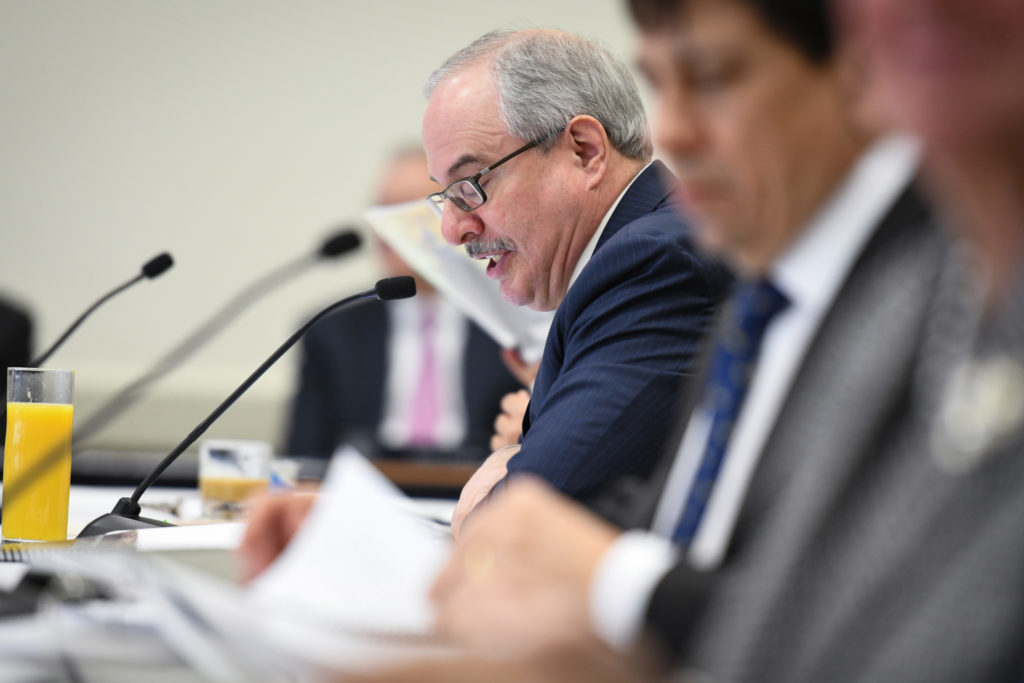Updated: Sept. 16, 2018 at 4:05 p.m.
Officials are rethinking how GW compares itself to other universities.
The University whittled down its list of peer schools from 18 to 12 this semester in an effort to be more focused on research and to remove schools with sky-high endowments that are not actual competitors of GW, officials said. Experts said universities will often re-evaluate peer groups – schools that are used as a basis of comparison for everything from tuition costs to information technology programs – when new leadership takes charge.
The new list of peer schools eliminates eight of GW’s former peers – Vanderbilt University, Emory University, Duke University, the University of Pennsylvania, American University, the University of Washington at St. Louis, Southern Methodist University and Northwestern University. Two new universities – the University of Pittsburgh and Wake Forest University – were added to the list.
University President Thomas LeBlanc said at a Faculty Senate last month that GW’s previous list of 18 peer schools was “all over the map” because the list of schools had little in common, making it difficult to form an accurate understanding of where GW ranked within its peer group.
“People cannot tell you why the market basket is a market basket,” he said. “It includes schools that are much wealthier than we are and it includes schools that are poorer than we are. It includes schools we might aspire to be, it includes schools we pray to God that we don’t fall to.”
University spokeswoman Lindsay Hamilton said officials looked at each university’s endowment per student, research metrics from the Association of American Universities, National Science Foundation research rank and other data points to create the new list. She said the move is designed “to better align” GW’s peers with more “comparable resource bases and to emphasize institutions leading in research.”
Many of the peers that were eliminated from GW’s peer list had vastly higher endowments than GW. The average endowment of the universities eliminated from the peer schools is around $7 billion, which is more than $5 billion higher than GW’s $1.7 billion endowment. The University of Pennsylvania, which was removed from the list, clocks in at $12.2 billion.
“Ultimately, GW’s new market basket will serve as an important, more accurate tool in helping the University better contextualize and operationalize its goal of preeminence,” Hamilton said in an email.
Richard Iannelli, the interim director of institutional research at Vanderbilt University, said Vanderbilt updates its peer schools almost annually.
“Having a sense of peers is good, too, if you have to do something such as consider making significant change to how you operate, or if for example you are buying a new IT system or product,” Iannelli said.
Officials are in the process of determining a new information planning system at GW in the coming years.
Iannelli said administrators consider both the universities that are competition for prospective students and those that the university strives to be more like.
In the past GW has lagged behind peer schools in areas like fundraising and alumni giving rate. In U.S. News rankings, GW has ranked below most of its old peer schools, this past year slipping below all but two of its previous peer schools.
If a university is too far behind its peer schools, it could lead to the institution chasing something that it can never achieve, Iannelli said. But if the school is doing significantly better than its peers, it may not have as much of an incentive to improve.
“If their peer list is comprised of too many schools that are really trailing a school’s relative competitive position could result in a school not adapting to changes in the higher education landscape and finding themselves playing catch up at a later point in time,” he said in an email.
When new leadership takes over at a university, he said goals may change, potentially triggering officials to rethink a peer group as a new “strategic vision” forms. Since LeBlanc arrived on campus over the summer, he has instituted five main priorities including improving student life, fundraising and research.
Michael Tumeo, the director of institutional research at Southern Methodist University, said his university reassesses peer schools about every 10 years.
Tumeo said SMU has two sets of market basket schools that are used for comparison – a list of aspirational schools and a list of similar schools.
“One is to help provide context for the institutions so as you’re gathering data about yourself, your student counts, your student expenditures, you need a kind of need a way to gauge that against institutions,” he said.
He said schools assess their peers and that the direction in which universities want to go may change over time.
“If they are going to just have a single list of schools they might want to look more at schools they want to be like, so they may make that shift as well,” Tumeo said.
GW’s peer schools
Boston University
Georgetown University
University of Miami
New York University
Northeastern University
University of Pittsburgh
University of Rochester
University of Southern California
Syracuse University
Tufts University
Tulane University
Wake Forest University
This post was updated to reflect the following correction:
The Hatchet incorrectly reported that seven schools were eliminated from GW’s peer list. Eight schools were eliminated. We regret this error.





